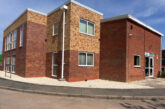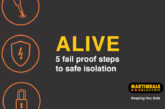
As Electrical Safety First (ESF) continues to lead the charge for a culture change in the industry – advocating a move away from ‘simple’ compliance to a risk-based culture when it comes to EICRs – Martyn Allen, Technical Director, reveals how the charity aims to achieve this goal.
Electrical Safety First has lobbied hard to remove the ‘tenure lottery’ – where different housing tenures have differing levels of protection from electrical risk required by law. We’ve had significant success in this area. Mandatory electrical inspection and testing, requiring an Electrical Inspection Condition Report (EICR), was introduced for England’s PRS in 2020, with draft regulations for the social housing sector (SHS) published last year. Regulations are now in place for private and social housing tenants in Wales, and developments are underway for the private rented sector (PRS) in Northern Ireland.
However, it’s not enough to legislate, we must also ensure consistency of implementation.
A closer focus on EICRs
ESF’s new EICR working group aims to provide greater clarity for inspectors and transparency for landlords and tenants. But to achieve this requires a cultural shift in the way we look at risk.
While standards and guidelines provide an agreed way of doing something, in real life they have to be interpreted. This is illustrated by the number of queries around EICR classification codes submitted to the Wiring Regulations Advisory Group (WRAG).
A popular online resource for contractors, WRAG addresses questions about BS761, the IET Wiring Regulations, and is hosted on our website. So we’re keenly aware of the subjectivity involved when establishing classification codes in an EICR and the consequences of applying codes incorrectly.
Our EICR improvement working group is still in its infancy but already includes a range of stakeholders, including BEAMA, NICEIC, NAPIT, SELECT, IET, ECA, EAL, and fire and rescue services. It is also expanding to include representatives from relevant government departments across Westminster and the devolved nations, as we encourage greater regulatory alignment between them.
Discussions with ‘end-user’ organisations, such as the National Residential Landlords Association and the Association of Residential Lettings Agents, are also underway.
In today’s cost of living crisis, combined with the introduction of new legislation for private and social landlords, transparency becomes increasingly important. Landlords need to feel confident that, wherever their property is located, they’re getting the same high standard of service and assurance of safety from an EICR.
One of the first things the group is considering is the improved consistency of allocating classification codes in EICRs. An inspector is, without doubt, the best person to judge the level of risk attributed to an installation fault or damage and allocate the most appropriate classification code, but there are too many examples of inconsistencies not expected in domestic installations.
Our Best Practice Guide 4: Classification Codes for domestic Installations and similar installations, provides an extensive list of example classifications. Our guides are recognised by industry and cited by government, but more is needed to embed the classification codes further into the industry and amongst landlords and lettings agents.
A related issue being considered by the group is the fact that, currently, there’s no system for arbitration. A landlord questioning the accuracy of an EICR has no route for appeal. All they can do is employ another contractor in the hope of getting a different outcome.
Additional areas of concern
Other areas the group will be reviewing relate to fixed electrical equipment in domestic installations – and if they should be an integral part of an EICR. Some group members thought fixed equipment could be easily incorporated into an EICR, while others were concerned it would increase consumer costs.
Whatever your view, it shows that clarity is needed to ensure that fixed electrical equipment is regularly inspected and tested, either as part of an EICR or in a separate report. One key outcome for the group will be establishing a new Best Practice Guide 10, to provide a specification for periodic inspection and testing of the fixed electrical installation in rented homes, which is expected to be published shortly.
At ESF we believe we can best protect the consumer by working with the industry, so we’re committed to developing and supporting best practice and continuous improvement. Creating a dedicated EIRC improvement working group, which encompasses a broad church of stakeholders, means everyone’s voices can be heard.
Increased consistency and transparency of EICRs creates more assurance for landlords and lettings agents, and improved clarity and simplification for inspectors. And, hopefully, a reduction in those few individuals who choose to apply their own rules for personal gain.
Browse and download Electrical Safety First’s Best Practice Guides here








